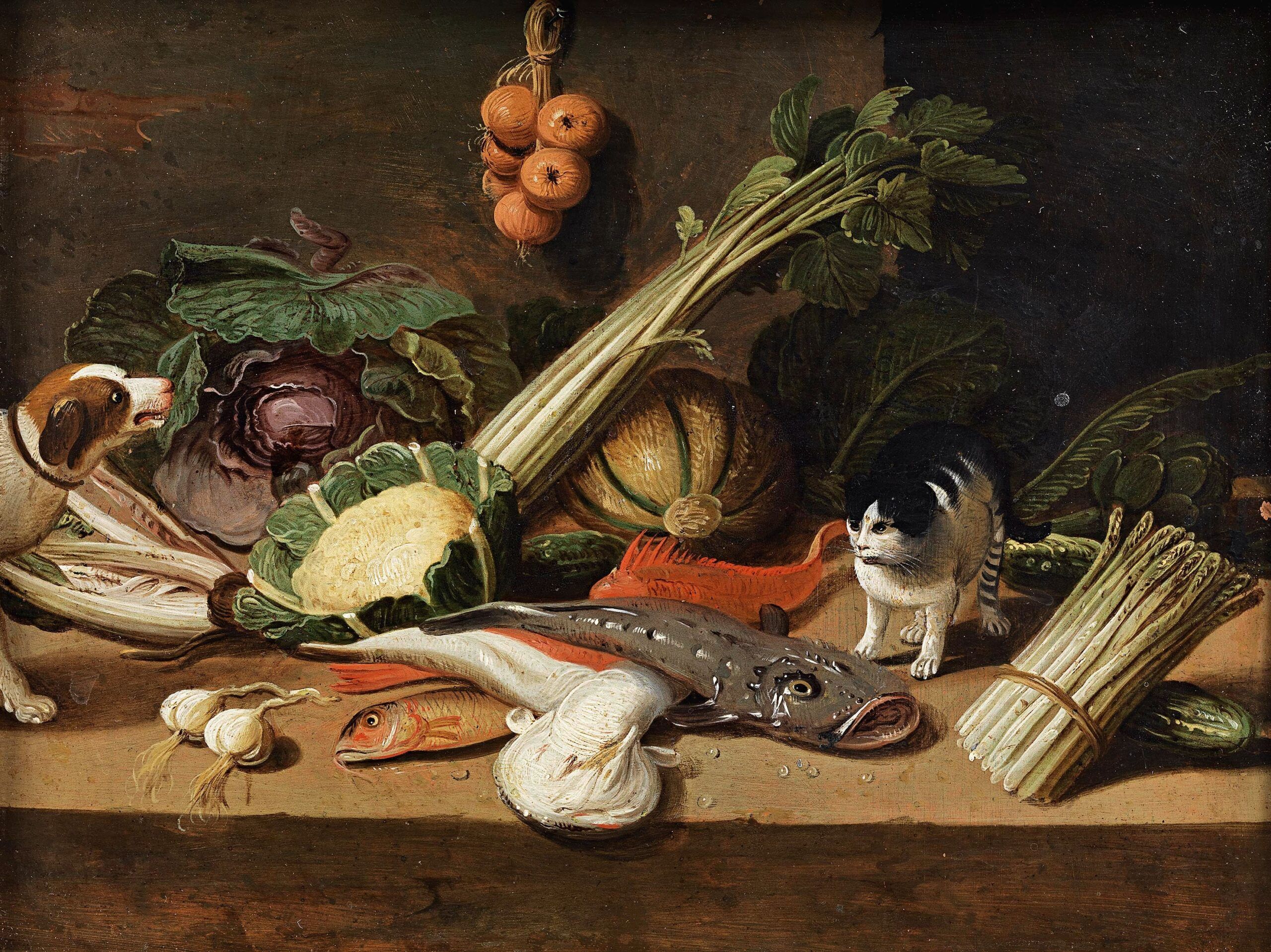Active in the Southern Netherlands or Italy, ca. 1660-1700
A Kitchen Still Life with a Dog and a Cat and a Bunch of Asparagus
Oil on copper
H. 16,5 cm. W. 22 cm.
PROVENANCE
Sale Gallieria | Paris | 29 November 1976 | Lot 44 | As Jan van Kessel the Elder (1626-1679)
Collection Galerie Sanct Lucas | Vienna
Private collection
Sale Beaux-Arts | Paris | 26 April 2005 | Lot 22 | As by Jan van Kessel the Younger (1654-1708)
Sale Hampel | Munich | 6. December 2012 | Lot 147 | As by Jan van Kessel the Younger (1654-1708)
Private collection | Belgium
LITERATURE
Exhibition catalogue Galerie Sanct Lucas (1978). Gemälde alter Meister: Winter 1978/79. Vienna, Nr. 18, as Jan van Kessel the Elder (1626-1679)
Ertz. K. & Nitze-Ertz, Ch. (2012). Die Maler Jan van Kessel. Jan van Kessel der Ältere 1626-1679. Jan van Kessel der Jüngere 1654-1708. Jan van Kessel der ‘Andere’ ca. 1620-ca. 1661. Kritische Kataloge der Gemälde. Lingen, p. 419, cat.nr. 77, with ill.
EXHIBITION
Winter exhibition | Galerie Sanct Lucas | Vienna | 1978-1979 | Nr. 18
RECORD
The present painting is registered at the RKD in The Hague under the nr. 241130
CATALOGUE NOTE
Pseudo-Jan van Kessel the Younger is an invented name for the artist (or studio) that produced well over two hundred, mainly small still lifes. These include varied combinations of a limited number of motifs in rather simple to quite elaborate compositions, none of which is (authentically) signed. The rendering of the motifs in these paintings is rather naïve and decorative. This oeuvre was (largely) catalogued in Ertz/Nitze-Ertz 2012 as the work of Jan van Kessel the Younger, whose small known authentic oeuvre is different in style and execution and substantially higher in quality. For the sake of convenience, paintings by Pseudo-Jan van Kessel II were previously (until 2017) catalogued at the RKD as ‘studio of Jan van Kessel (I)’. They often occur in pairs, occasionally in larger sets, are usually small in size and mostly painted on (unmarked) copper, occasionally on walnut panels, and once on slate. These supports, and the fact that several have an Italian provenance, suggest that these works, although Flemish in character, were painted in Southern Europe, probably in Italy. The artist may well have been Flemish or of Flemish descent. Occasionally motifs were borrowed from Flemish examples, but only in one instance (a pair of gurnards) from Jan van Kessel, with whose oeuvre there is no further specific relationship. Since there is some variety in quality of execution, and in view of their apparent mass production, it may well be that these still lifes were the product of a studio, rather than of one individual artist.

